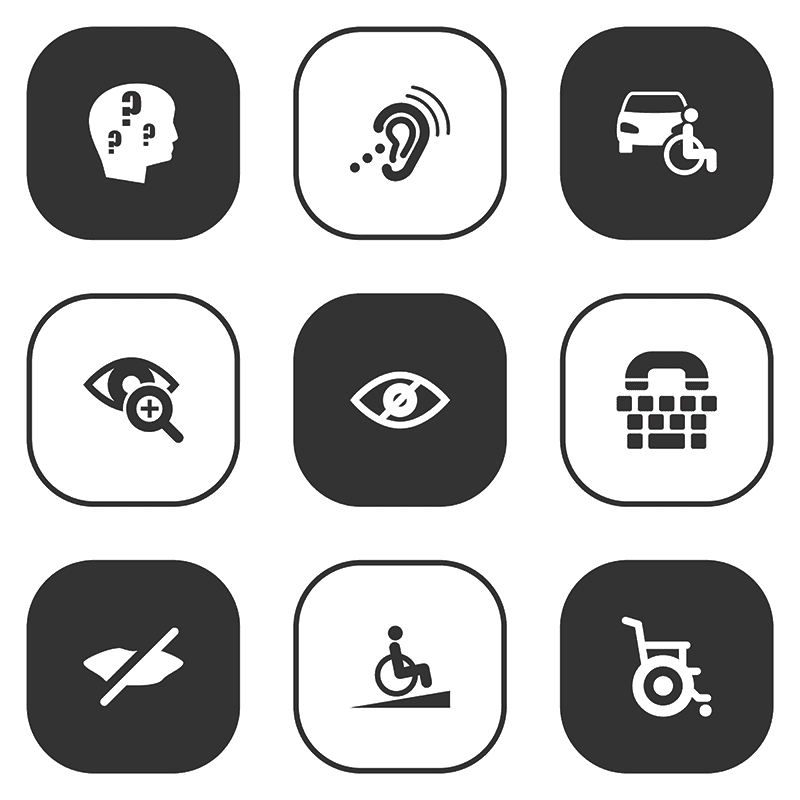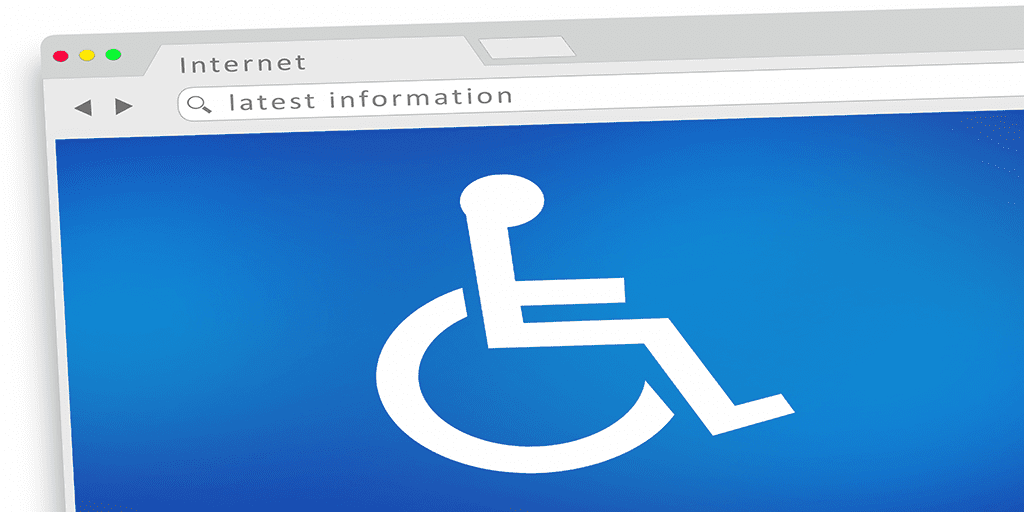You can create the best online content in the world, but what good is it if it never reaches your intended audience? Translation is a critical step in the process of ensuring that your content is effective and engaging. However, in addition to language barriers, technology itself can be a barrier. To really make sure that your content reaches everyone, you need to consider partnering with a localization agency to help with translation and web accessibility. With updates to the Americans with Disabilities Act (ADA), it is more important than ever to make these considerations.

What is web accessibility?
Oftentimes, websites – and eLearning courses in particular – are actually designed with accessibility barriers. Put another way, companies and educators are creating valuable content, but aren’t sharing it successfully with their audiences. From color choices and widgets, to site themes and scanned documents, there are all sorts of factors that impact accessibility.
Web accessibility is a process that ensures that all people, regardless of their disabilities, have equal access to the information contained within a website. By using intentional site design, information is communicated clearly, whether it is in print, audio, graphics, video, or a multimedia experience. With this inclusive design practice, information can be understood by all.
Web accessibility[1] isn’t just essential to help persons with disabilities; it is universally beneficial. From users with slower Internet connectivity to people who are aging, there are multiple reasons why audiences experience web content differently. By implementing accessibility best practices when translating content, that material can reach more people.
In addition to following best teaching practices, companies need to check for web accessibility for another reason. Under the United States Environmental Protection Agency’s section 508[2], federal agencies must ensure that their websites are accessible. Many other organizations, companies, and educational institutions are also adopting practices that are ADA compliant.
Tips to Keep Your eLearning Course ADA Compliant
Now that you understand what web accessibility is, you can hopefully see the benefits of ensuring it. So, how do you begin the implementation process? These are seven of the most important initial steps to take when it comes to translation and ADA compliance:
1. Engage audiences through multiple intelligences.
Educational best practices have long called for teaching to engage students using different learning styles[3]. Whether you are designing your course for the first time or having it translated, you want to make sure that you teach using a variety of learning styles. Include text as well as visuals. If you can also include an audio or video component, that’s even better. The more intelligences you include, the more likely your audience is to learn. The goal is to always present your content in multiple ways[4]. Professional localization teams can also help you decide how to present your content in ways that are appropriate for new audiences, considering not only language, but cultural norms as well.
2. Include alt descriptions in images.
Alt descriptions, otherwise known as alt tags, are getting a lot of buzz thanks to SEO. However, there is another important reason to include alt descriptions for your site images. They are, in fact, an alternative description of the image on the screen. For people with visual impairments, they will use a screen reader. A carefully-planned alt description shares a summary of the image clearly and succinctly.
When content is translated, it is essential that alt descriptions also be included. A skilled localization agency will be able to not only translate screen content, but they will translate page titles and other attributes, like alt descriptions, that might be less obvious.
3. Consider your page layouts.
A skilled translation team understands the importance of a clean page layout. They can also preserve the layout even if text expands or contracts based on the target language. Professional translation teams also understand how page layout can improve accessibility. By using bold, sans serif fonts and keeping the page uncluttered, readability increases. That means your message is communicated more clearly.

4. Select colors strategically.
The colors that are used in your eLearning course are even more significant than you may realize. Of course, colors are a key part of sharing your brand. Colors can also increase engagement and pique the interest of your learners. However, you want to choose your colors thoughtfully. Color blindness impacts[5] 1 in 200 women and 1 in 12 men. Choosing high-contrast colors will help your work stand out and be read more easily.
5. Use captions or transcripts.
If your online content includes audio or video, it is essential to include captions, such as SRT, VVT, or transcripts. That way, people can follow along. This support isn’t just for persons with disabilities; it is also a way to support people who are visual learners. Someone who has a difficult time taking in information by listening can refer to a transcript to learn the material better.
Since these resources are so vital, a localization agency can help with professional subtitling or video translation. Companies may also want to consider the use of sign language. By partnering with a localization agency, you can get advice on when that is appropriate and insight into the preferred local sign language.
6. Make your keyboard the star.
For a site to be considered truly accessible, the content should be accessible using just the keyboard. That means that instead of using the mouse to click, a user can move through the page using the tab key, enter button, and arrows[6]. During the translation process, a localization agency like Interpro can perform keyboard testing and validate other accessibility checks.
7. Keep your content organized.
Another way to improve learning and increase accessibility is to ensure that your eLearning course follows a uniform structure. With digital content translation, a skilled team will work to ensure that each module of your course uses consistent section header design. Additionally, the content underneath those headers should be organized using lists – either bullets or numbers.
The added benefit of working with a localization agency is that when this content is translated, the team can localize the organization of your site’s content in a way that is most familiar and useful to your new target audiences by being mindful of things like symbols and formatting.
Final Thoughts on Using a Localization Agency for ADA Compliance
Translation and localization can take your content global and help you reach multilingual audiences. To maximize the effectiveness of this reach, a professional localization agency will focus on more than just language translation. Professional localization agencies understand American expectations for web accessibility under Section 508 in addition to other protocols. They also have knowledge of other pertinent regulations that companies must adhere to as they expand into global markets.
Growing your market isn’t just about translating your content. By taking web accessibility and ADA compliance into consideration, your courses will follow design best practices to reach every kind of audience.
[1] https://www.w3.org/WAI/fundamentals/accessibility-intro/
[2] https://www.epa.gov/accessibility/learn-about-section-508-and-digital-accessibility
[3] https://www.edutopia.org/multiple-intelligences-research
[4] https://www.washington.edu/doit/equal-access-universal-design-instruction


